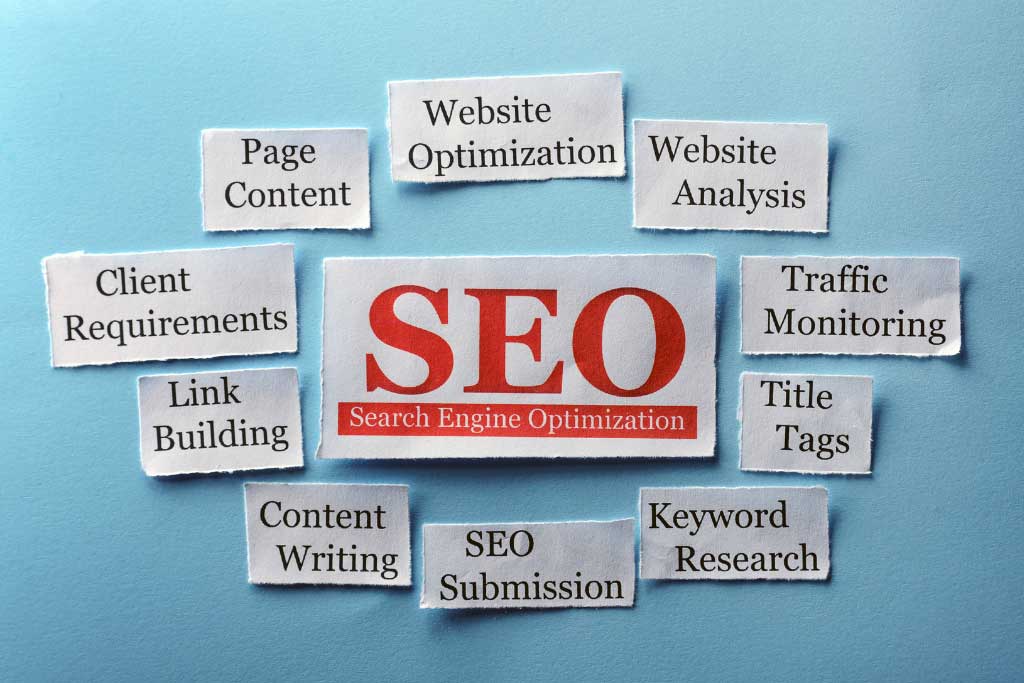In today’s digital landscape, having a website is the first step toward online success. The real challenge lies in making your website visible to your target audience. That’s where Search Engine Optimization (SEO) comes into play. This ultimate guide is crafted to help you grasp the fundamentals of SEO and how it can elevate your online presence. Whether you’re a small business owner, a blogger, or a digital marketer, mastering SEO can unlock endless growth opportunities.
Throughout this guide, we’ll explore essential SEO techniques, share practical tips, and highlight recent trends to keep you ahead of the curve. From understanding keywords to enhancing your site’s user experience, you’ll immediately find actionable insights to implement. Let’s dive in and start optimizing!
Understanding SEO Foundations
To kick off your SEO journey, it’s crucial to understand its core principles. SEO improves your website’s visibility on search engine results pages (SERPs). When done right, it can drive organic traffic to your site and increase brand awareness.
At its heart, SEO revolves around search engines like Google, Bing, and Yahoo. These engines use algorithms to index and rank web pages based on relevance and quality. By aligning your website with these criteria, you enhance your chances of ranking higher.
Keywords play a pivotal role in SEO. They are the terms and phrases users type into search engines when looking for information. Identifying and incorporating relevant keywords into your content helps search engines understand your site’s purpose and content.
Discover the Power of SEO for Website Success
Unlock the secrets to online visibility with our SEO guide. Learn strategies to enhance your website’s success. Start optimizing today!
Crafting an Effective Keyword Strategy
Keywords are the backbone of any successful SEO strategy. To craft an effective keyword plan, you must start with thorough research. Tools like Google Keyword Planner or SEMrush can help identify popular and relevant keywords in your niche.
When selecting keywords, aim for a mix of short-tail and long-tail keywords. Short-tail keywords are broad terms with high search volume but also high competition. On the other hand, long-tail keywords are more specific phrases with lower search volume, which often translates into lower competition and higher conversion rates.
Once you’ve chosen your keywords, integrate them naturally throughout your content. Avoid keyword stuffing, which can lead to penalties from search engines. Instead, focus on creating valuable, informative content that naturally incorporates your chosen keywords.
Optimizing On-Page Elements
On-page SEO involves optimizing individual web pages to rank higher and attract more traffic. Start with your title tags and meta descriptions. These elements appear in search results and should be compelling and keyword-rich to encourage clicks.
Headers, such as H1, H2, and H3 tags, help structure your content and make it easier for search engines to understand. Use these tags to break your content into sections, each focusing on a relevant subtopic. This not only enhances readability but also improves SEO.
Another critical on-page element is your URL structure. Ensure your URLs are concise, descriptive, and include target keywords. This helps both search engines and users understand the content of your pages.
Creating High-Quality Content
Content is the backbone of SEO. Your content must be engaging, informative, and valuable to attract and retain visitors. Focus on producing content that answers user queries and solves problems.
Incorporate a variety of content types, such as blog posts, videos, infographics, and podcasts. This diversity can appeal to different segments of your audience and keep them engaged. Remember, the longer visitors stay on your site, the better your SEO performance.
Content needs to be accurate and up-to-date to be deemed high-quality. Review and update your content regularly to ensure it remains relevant and informative. This practice not only benefits SEO but also enhances user experience.
Enhancing User Experience
User experience (UX) is a critical aspect of SEO. Search engines value websites that offer seamless and enjoyable experiences. Start by optimizing your site’s loading speed. Slow-loading pages can lead to high bounce rates, negatively affecting your rankings.
Mobile responsiveness is another key factor. With the growing number of mobile users, your site must be accessible and functional across all devices. Use responsive design to ensure your site adapts to different screen sizes and resolutions.
Navigation is also crucial for UX. A clear and intuitive menu helps users quickly find what they’re looking for. Consider implementing breadcrumb navigation to guide users through your site and improve their overall experience.
Leveraging Technical SEO
Technical SEO focuses on optimizing your site’s infrastructure to improve visibility. Start by ensuring your site is crawlable and indexed by search engines. Use tools like Google Search Console to identify and fix any potential issues.
XML sitemaps and robots.txt files are essential components of technical SEO. An XML sitemap provides search engines with a roadmap of your site’s structure, while a robots.txt file instructs search engines on which pages to crawl.
Page speed is a significant technical factor. Optimize images, leverage browser caching, and minimize code to enhance loading times. A fast website improves user experience and boosts SEO performance.
Building Quality Backlinks
Backlinks remain a powerful ranking factor in SEO. They are links from other websites that point to your site, signaling to search engines that your content is valuable and trustworthy.
Focus on acquiring high-quality backlinks from reputable sources within your industry. Guest posting, building relationships with influencers, and creating shareable content are effective strategies for earning backlinks.
Monitor your backlink profile regularly to identify toxic or spammy links. Disavow these links to avoid potential search engine penalties. A healthy backlink profile is essential for maintaining and improving your rankings.
Harnessing Local SEO
Local SEO is crucial for businesses targeting local audiences. Start by claiming and optimizing your Google My Business listing. Provide accurate information about your business, including name, address, phone number, and hours of operation.
Local keywords play a vital role in local SEO. Incorporate location-based keywords into your content and meta tags to increase visibility in local searches. Encourage satisfied customers to leave positive reviews on your Google listing and other platforms.
Additionally, ensure your website is listed in relevant local directories. This can boost your credibility and improve your chances of appearing in local search results.
Staying Informed with Analytics
Analytics tools provide invaluable insights into your SEO performance. Google Analytics and Google Search Console are essential for tracking metrics such as traffic, bounce rates, and conversions.
Use these tools to understand which pages are performing well and which need improvement. Identify trends and patterns in user behavior to inform your future SEO strategies.
Regularly review your analytics data to measure the impact of your SEO efforts. This practice allows you to make data-driven decisions to optimize and refine your approach continually.
Adapting to SEO Trends
SEO is a dynamic field, with trends and algorithms constantly evolving. Stay informed about the latest developments to maintain a competitive edge. Follow industry leaders, attend webinars, and participate in forums to keep up with best practices.
Voice search and AI technology are emerging trends shaping the future of SEO. To optimize your content for voice queries, incorporate conversational language and long-tail keywords.
Structured data and schema markup are also gaining traction. Implement these elements to help search engines understand your content better and enhance your visibility in featured snippets.
Integrating Social Media for SEO
Social media can indirectly impact your SEO efforts. Sharing your content on social platforms increases its reach and can lead to more backlinks and traffic to your site.
Engage with your audience on social media to build brand awareness and loyalty. Encourage users to share and interact with your content, increasing its visibility and potential for organic reach.
While social signals are not direct ranking factors, they contribute to your overall online presence and can enhance your SEO strategy.
The Future of SEO
The future of SEO is bright, with exciting developments on the horizon. Artificial intelligence and machine learning will continue to play a significant role in shaping search engine algorithms and user experiences.
Mobile-first indexing is becoming increasingly prevalent, highlighting the importance of mobile optimization. Ensure your site is responsive and provides a seamless experience across all devices.
Personalization and user intent will drive SEO strategies in the coming years. Tailor your content to meet your audience’s needs and preferences to stay ahead of the competition.
Conclusion
Mastering the art of SEO is a continuous journey that requires dedication and adaptability. By implementing the strategies outlined in this guide, you’ll be well-equipped to enhance your website’s visibility and drive organic traffic.
Remember, SEO is not a one-time effort but an ongoing process. Stay informed about industry trends, monitor your performance, and be willing to adjust your strategies as needed. By doing so, you’ll maintain a strong online presence and enjoy long-term success.
For those ready to take the next step, consider exploring advanced SEO resources or partnering with experts to further refine your approach. The more you invest in your SEO efforts, the greater the rewards for your website and business.




